Two-pendulum Harmonograph Continuous Curve Drawings
Permutations of the 1:1 Ratio
The 1:1 ratio is the classic configuration for employing the Two Pendulum Harmonograph. The pendulums are not set to an exact 1:1 ratio, of course, because this doesn’t produce anything of interest; but if you calibrate the length of the pendulums so that their periods are very slightly out of sync, many interesting and unique curves can be generated. Note that the closer you are to a precise 1:1 ratio, tighter nets (cross hatching) and more vivid Moiré patterns (an optical illusion created by crossing lines and patterns) are produced.
The principle ways to create different patterns with the 1:1 ratio are as follows:
§ Vary the curvature of the swing (linear l, oval 0, or circular motion O)
§ Vary swing direction (concurrent or counter-current pendulum motion)
§ Vary the amplitude of the pendulums (small or large swing)
§ Vary the pendulum’s phase (timing of initial pendulum release)
§ Vary the ratio (1:1+ phase synch relationship)
§ Vary the decay (add or subtract pendulum mass)
§ Control starting and stopping points of the drawing
Although no two Harmonograms are ever exactly the same, you can reproduce the same general curve (and its mirror image) with practice.
Click on the drawings below to see them full sized.
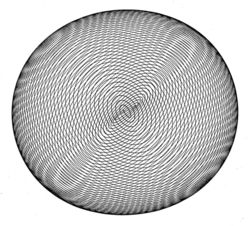
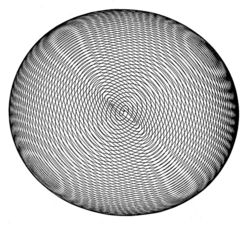
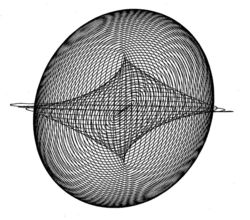
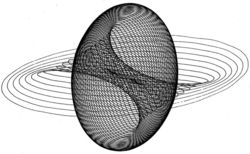
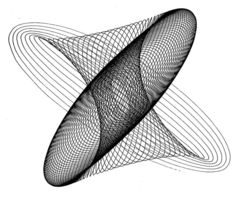
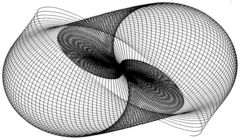
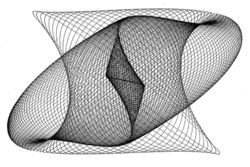
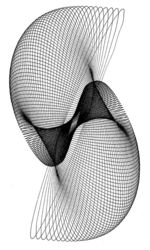
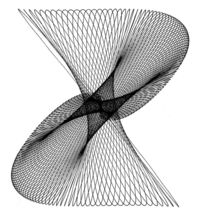
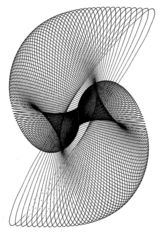

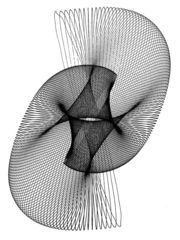
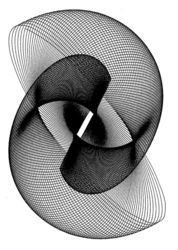
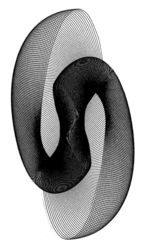
_237x250.jpg)
_213x250.jpg)
_250x151.jpg)
_250x222.jpg)
_250x166.jpg)
_250x128.jpg)
_250x230.jpg)
_250x210.jpg)
_250x179.jpg)
_141x250.jpg)
_211x250.jpg)
_93x250.jpg)
_250x236.jpg)
_141x250.jpg)
_250x209.jpg)
_250x207.jpg)
_250x228.jpg)
_137x250.jpg)
_250x183.jpg)
_187x250.jpg)
_250x169.jpg)
_139x250.jpg)
_250x211.jpg)
_250x204.jpg)
_166x250.jpg)
_187x250.jpg)